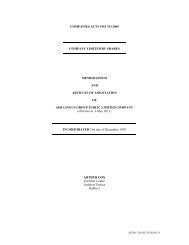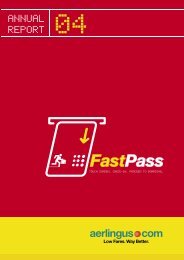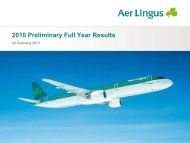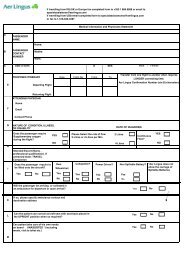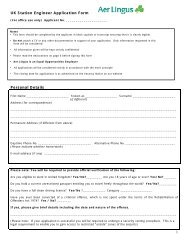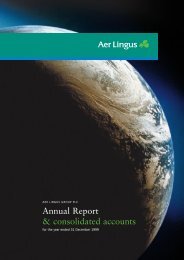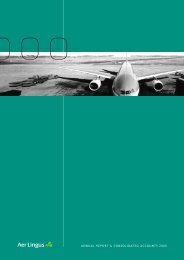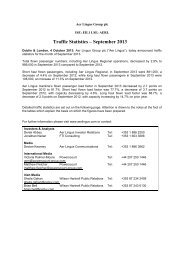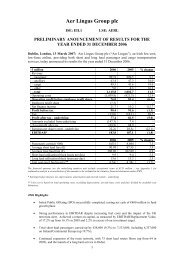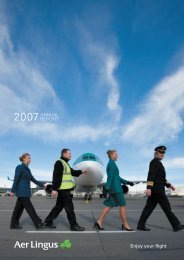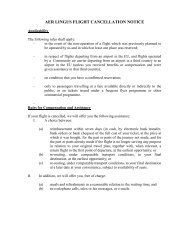annual report 2009 - Aer Lingus
annual report 2009 - Aer Lingus
annual report 2009 - Aer Lingus
Create successful ePaper yourself
Turn your PDF publications into a flip-book with our unique Google optimized e-Paper software.
60 Financial Statements <strong>Aer</strong> <strong>Lingus</strong> Group Plc – Annual Report <strong>2009</strong>Notes to the Consolidated Financial Statements [continued]2 Summary of significant accounting policies [continued]2.12 InventoriesInventories are stated at the lower of cost and net realisable value. Cost is determined using weighted average cost. Net realisablevalue is the estimated selling price in the ordinary course of business, less applicable disposal costs.2.13 Trade receivablesTrade receivables are recognised initially at fair value and subsequently measured at amortised cost using the effective interest method,where appropriate, less provision for impairment.A provision for impairment of trade receivables is established when there is objective evidence that the Group will not be able to collectall amounts due according to the original terms of the receivables. Significant financial difficulties of the debtor, probability that thedebtor will reject charges and default or delinquencies in payments are considered indicators that the trade receivable is impaired.The amount of the provision is the difference between the asset’s carrying amount and the present value of estimated cash flows,discounted at the effective interest rate. The carrying amount of the assets is reduced through the use of an allowance accountand the amount of the loss is recognised within the income statement within ‘ground operations, catering and other operating costs’.When a trade receivable is uncollectable, it is written off against the allowance account for trade receivables. Subsequent recoveriesof amounts previously written off are credited against the same account in the income statement.2.14 Cash and cash equivalents and depositsCash and cash equivalents includes cash in hand, deposits held at call with banks, other short-term highly liquid investments withoriginal maturities of three months or less, and bank overdrafts. Bank overdrafts are shown within borrowings in current liabilitieson the statement of financial position.Deposits comprise short and medium-term deposits. Given that the maturities of these investments fall outside the three monthtimeframe for classification as cash and cash equivalents under IAS 7 Statement of Cash Flows, the related balances have beenclassified as ‘deposits’.2.15 Share capitalOrdinary shares are classified as equity. Incremental costs directly attributable to the issue of new shares or options are shownin equity as a deduction, net of tax, from the proceeds.Where any group company purchases the Company’s equity share capital (treasury shares), the consideration paid, including any directlyattributable incremental costs (net of income taxes) is deducted from equity attributable to the Company’s equity holders until the sharesare cancelled or reissued. Where such shares are subsequently reissued, any consideration received, net of any directly attributableincremental transaction costs and the related income tax effects, is included in equity attributable to the Company’s equity holders.2.16 Trade payablesTrade payables are obligations to pay for goods or services that have been acquired in the ordinary course of business from suppliers.Accounts payable are classified as current liabilities if payment is due within one year or less (or in the normal operating cycle of thebusiness if longer). If not, they are presented as non-current liabilities.Trade payables are recognised initially at fair value and subsequently measured at amortised cost using the effective interest method.



